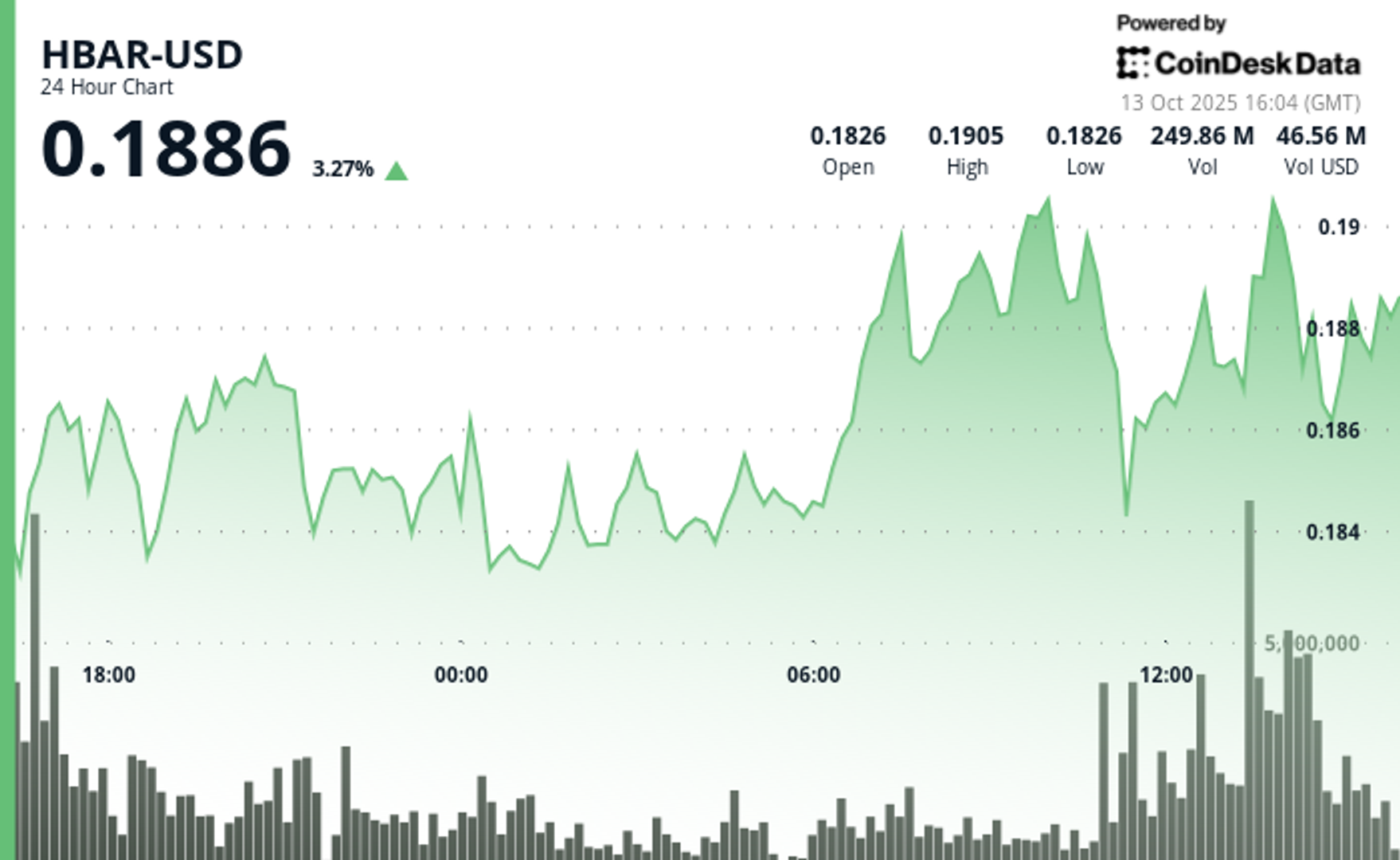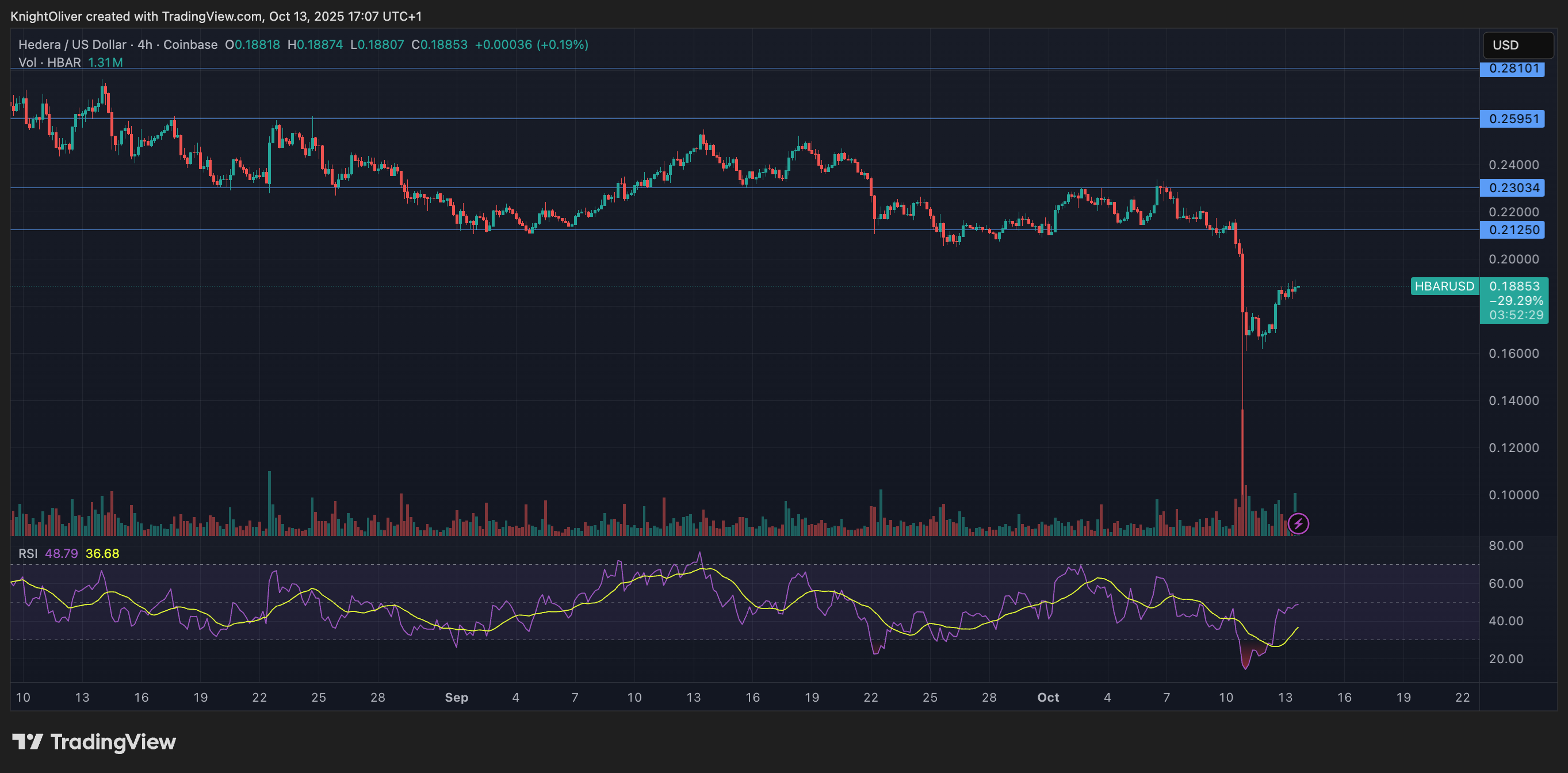Uncategorized
Unlocking Private Credit’s Potential: How Tokenization Brings DeFi Innovation to Traditional Finance

Could the crypto revolution’s legacy extend beyond democratizing money? Today, it’s paving the way to reinvent private credit. Envision a future where lending to mid-sized businesses or financing infrastructure projects mirrors the efficiency and openness of a decentralized exchange. That’s the aim of tokenization, a blockchain-powered innovation breaking down decades-old barriers in a $1.7 trillion (and growing) private credit market.
Private credit 101: the invisible engine of global finance
Private credit is an integral element of non-bank lending in which institutional players like hedge funds, private equity firms and specialized lenders provide loans directly to businesses. These aren’t your typical bank loans — think bespoke financing for startups, real estate developments or corporate expansions, often offering higher yields than public bonds, averaging 8-12% vs. 4-6% for corporate debt. But here’s the catch: this potentially lucrative market has long been gated by TradFi’s legacy systems.
You’re reading Crypto Long & Short, our weekly newsletter featuring insights, news and analysis for the professional investor. Sign up here to get it in your inbox every Wednesday.
Why crypto natives should care
If you’re familiar with DeFi’s ethos — permissionless access, composable assets and real-time settlements — you’ll instantly recognize private credit’s pain points:
Locked-up capital: Investments are often trapped for 5+ years with no secondary market. (Imagine an NFT you can’t sell until 2029.)
High barriers to entry: Minimum investments start at six figures, shutting out retail and smaller institutions.
Analog inefficiency: Manual underwriting, paper-based contracts and monthly — not real-time — performance updates.
Black box risk: Pricing and creditworthiness assessments lack the transparency that crypto markets demand.
Tokenization flips this script. By converting loans into blockchain-based digital tokens, it injects DeFi’s superpowers — liquidity pools, fractional ownership, smart contract automation — into a market starving for innovation. Suddenly, private credit can operate with the efficiency of a stablecoin transaction, the transparency of an on-chain ledger and the accessibility of a crypto exchange.
Tokenization 2.0: rewiring private credit’s DNA with blockchain
We believe that bringing private credit on-chain isn’t just a technical upgrade — it could be a fundamental shift in how lending markets function.
1. Fractional ownership: breaking the barriers to entry
Tokenization shatters private credit’s exclusivity by slicing loans into bite-sized digital tokens, democratizing access to yields once reserved for private equity whales.
Wider accessibility: Platforms can offer private credit exposure in smaller denominations, mirroring how crypto exchanges fractionalized bitcoin.
Global investor pools: A developer in Nairobi or a DAO treasury in Denver now has the potential ability to finance a solar farm in Spain, with no intermediaries and no borders.
New yield strategies: Composability lets investors mix tokenized loans with DeFi primitives (e.g., using private credit tokens as collateral for stablecoin loans).
2. Liquidity unleashed: from locked vaults to 24/7 markets
Private credit’s illiquidity has always been a trade-off for higher returns. Tokenization rewrites the rules by creating programmable secondary markets. Imagine a marketplace where tokenized loans trade peer-to-peer, with pricing reflecting real-time risk data. Smart contracts could automate liquidity reserves, letting investors exit positions early by tapping into pooled capital. And on-chain activity — like a borrower’s revenue milestones or loan repayments — could auto-adjust token values, killing TradFi’s stale monthly NAV updates. No more waiting for a quarterly fund window to exit, since the market never sleeps.
3. Instant settlements and lower costs
TradFi settlement can drag for days, riddled with custodians, agents and banks each taking cuts. Tokenization would be able to clear transactions in seconds. Here’s how:
Atomic transactions: Loan funding, interest payments and secondary trades settle instantly via smart contracts. No more «wire confirmation delays.»
Costs slashed: Cutting out intermediaries such as lawyers and transfer agents could reduce fees, passing savings on to both borrowers and investors.
Cross-chain synergy: A loan tokenized on Ethereum could be used as collateral on Solana, bridging private credit with DeFi liquidity rails.
It’s the TradFi→CeFi→DeFi pipeline, accelerated.
Challenges and additional risks introduced by tokenizing private credit
Tokenizing private credit streamlines funding and unlocks new liquidity pathways, but it also introduces complex challenges that must be addressed before the market can scale.
Regulatory uncertainty. Compliance remains a moving target. While jurisdictions are shaping digital securities laws, legal enforcement of tokenized credit agreements is still evolving. Institutions must navigate securities classifications, investor protections and AML requirements — all without a standardized global framework.
Smart contract and cybersecurity risks. Transparency doesn’t equal security. Bugs, governance flaws and cyberattacks can all lead to capital losses. Unlike traditional credit markets, smart contracts operate without centralized dispute resolution, making risk mitigation strategies like contract audits, insurance and fallback mechanisms critical.
Liquidity fragmentation. More platforms are issuing tokenized private credit, but without standardization, liquidity remains siloed. Secondary market depth depends on consistent credit risk assessments, uniform token structures, and legally enforceable transferability — all of which remain work in progress.
Valuation and credit risk complexity. Tokenization doesn’t erase borrower credit risk — it just moves it on-chain. While real-time financial data and automated risk models improve transparency, fundamental underwriting, default management, and legal enforceability still require off-chain verification. Pricing tokenized private credit relies on a hybrid approach, blending traditional credit models with blockchain-based risk signals.
Operational challenges. Early issuers of tokenized private credit have faced high costs replicating legal agreements on-chain, limiting initial efficiency gains. Meanwhile, DeFi-based private lending markets have encountered problem loans in emerging economies, proving that tokenization can’t fix credit risk — it only changes how it’s structured and monitored.
Interoperability issues. The challenge isn’t just blockchain compatibility; it’s aligning legal structures, credit risk methodologies and secondary market infrastructure across different ecosystems. For example, a tokenized credit instrument on Ethereum may not be legally equivalent to one on Avalanche, limiting cross-platform liquidity. Without credit risk standardization and regulatory harmonization, true scalability remains elusive.
Despite these hurdles, tokenized private credit is gaining momentum. As compliance frameworks solidify, credit models improve and institutions enter the space, the market is inching closer to institutional-scale adoption. However, risk management will define its trajectory.
Future outlook: the road ahead for tokenized private credit
We believe the next decade won’t just evolve private credit — it will redefine it. Tokenization is merging TradFi’s institutional strength with DeFi’s agility, creating a financial ecosystem where loans function as programmable assets and liquidity moves seamlessly across markets.
Key trends to watch
Stablecoins as settlement rails. With $1.5 trillion in monthly volume, stablecoins are emerging as the default cash settlement layer for tokenized lending. Instant, frictionless transfers eliminate settlement delays and reduce counterparty risk.
Multichain credit markets. While Ethereum currently hosts 89% of tokenized assets, Solana, Avalanche and Polygon are rapidly gaining traction, paving the way for loans that move across chains as fluidly as do digital transactions.
AI-powered risk assessment. On-chain data is fueling AI-driven models to build dynamic, privacy-preserving credit scores. By continuously adjusting risk models based on borrower activity, tokenized lending markets can offer smarter underwriting, instant assessments, and lower default risks, all without compromising privacy.
Tokenized private credit isn’t just another asset class — it has the potential to become the operating system for a global capital market. As regulatory clarity improves, infrastructure matures and TradFi deepens its involvement, expect an explosion of new products, enabling borderless syndication, dynamic risk pricing and compliance mechanisms embedded directly into token structures.
Business
Strategy Bought $27M in Bitcoin at $123K Before Crypto Crash

Strategy (MSTR), the world’s largest corporate owner of bitcoin (BTC), appeared to miss out on capitalizing on last week’s market rout to purchase the dip in prices.
According to Monday’s press release, the firm bought 220 BTC at an average price of $123,561. The company used the proceeds of selling its various preferred stocks (STRF, STRK, STRD), raising $27.3 million.
That purchase price was well above the prices the largest crypto changed hands in the second half of the week. Bitcoin nosedived from above $123,000 on Thursday to as low as $103,000 on late Friday during one, if not the worst crypto flash crash on record, liquidating over $19 billion in leveraged positions.
That move occurred as Trump said to impose a 100% increase in tariffs against Chinese goods as a retaliation for tightening rare earth metal exports, reigniting fears of a trade war between the two world powers.
At its lowest point on Friday, BTC traded nearly 16% lower than the average of Strategy’s recent purchase price. Even during the swift rebound over the weekend, the firm could have bought tokens between $110,000 and $115,000, at a 7%-10% discount compared to what it paid for.
With the latest purchase, the firm brought its total holdings to 640,250 BTC, at an average acquisition price of $73,000 since starting its bitcoin treasury plan in 2020.
MSTR, the firm’s common stock, was up 2.5% on Monday.
Business
HBAR Rises Past Key Resistance After Explosive Decline

HBAR (Hedera Hashgraph) experienced pronounced volatility in the final hour of trading on Oct. 13, soaring from $0.187 to a peak of $0.191—a 2.14% intraday gain—before consolidating around $0.190.
The move was driven by a dramatic surge in trading activity, with a standout 15.65 million tokens exchanged at 13:31, signaling strong institutional participation. This decisive volume breakout propelled the asset beyond its prior resistance range of $0.190–$0.191, establishing a new technical footing amid bullish momentum.
The surge capped a broader 23-hour rally from Oct. 12 to 13, during which HBAR advanced roughly 9% within a $0.17–$0.19 bandwidth. This sustained upward trajectory was characterized by consistent volume inflows and a firm recovery from earlier lows near $0.17, underscoring robust market conviction. The asset’s ability to preserve support above $0.18 throughout the period reinforced confidence among traders eyeing continued bullish action.
Strong institutional engagement was evident as consecutive high-volume intervals extended through the breakout window, suggesting renewed accumulation and positioning for potential continuation. HBAR’s price structure now shows resilient support around $0.189–$0.190, signaling the possibility of further upside if momentum persists and broader market conditions remain favorable.

Technical Indicators Highlight Bullish Sentiment
- HBAR operated within a $0.017 bandwidth (9%) spanning $0.174 and $0.191 throughout the previous 23-hour period from 12 October 15:00 to 13 October 14:00.
- Substantial volume surges reaching 179.54 million and 182.77 million during 11:00 and 13:00 sessions on 13 October validated positive market sentiment.
- Critical resistance materialized at $0.190-$0.191 thresholds where price movements encountered persistent selling activity.
- The $0.183-$0.184 territory established dependable support through volume-supported bounces.
- Extraordinary volume explosion at 13:31 registering 15.65 million units signaled decisive breakout event.
- High-volume intervals surpassing 10 million units through 13:35 substantiated significant institutional engagement.
- Asset preserved support above $0.189 despite moderate profit-taking activity.
Disclaimer: Parts of this article were generated with the assistance from AI tools and reviewed by our editorial team to ensure accuracy and adherence to our standards. For more information, see CoinDesk’s full AI Policy.
Business
Crypto Markets Today: Bitcoin and Altcoins Recover After $500B Crash

The crypto market staged a recovery on Monday following the weekend’s $500 billion bloodbath that resulted in a $10 billion drop in open interest.
Bitcoin (BTC) rose by 1.4% while ether (ETH) outperformed with a 2.5% gain. Synthetix (SNX, meanwhile, stole the show with a 120% rally as traders anticipate «perpetual wars» between the decentralized trading venue and HyperLiquid.
Plasma (XPL) and aster (ASTER) both failed to benefit from Monday’s recovery, losing 4.2% and 2.5% respectively.
Derivatives Positioning
- The BTC futures market has stabilized after a volatile period. Open interest, which had dropped from $33 billion to $23 billion over the weekend, has now settled at around $26 billion. Similarly, the 3-month annualized basis has rebounded to the 6-7% range, after dipping to 4-5% over the weekend, indicating that the bullish sentiment has largely returned. However, funding rates remain a key area of divergence; while Bybit and Hyperliquid have settled around 10%, Binance’s rate is negative.
- The BTC options market is showing a renewed bullish lean. The 24-hour Put/Call Volume has shifted to be more in favor of calls, now at over 56%. Additionally, the 1-week 25 Delta Skew has risen to 2.5% after a period of flatness.
- These metrics indicate a market with increasing demand for bullish exposure and upside protection, reflecting a shift away from the recent «cautious neutrality.»
- Coinglass data shows $620 million in 24 hour liquidations, with a 34-66 split between longs and shorts. ETH ($218 million), BTC ($124 million) and SOL ($43 million) were the leaders in terms of notional liquidations. Binance liquidation heatmap indicates $116,620 as a core liquidation level to monitor, in case of a price rise.
Token Talk
By Oliver Knight
- The crypto market kicked off Monday with a rebound in the wake of a sharp weekend leverage flush. According to data from CoinMarketCap, the total crypto market cap climbed roughly 5.7% in the past 24 hours, with volume jumping about 26.8%, suggesting those liquidated at the weekend are repurchasing their positions.
- A total of $19 billion worth of derivatives positions were wiped out over the weekend with the vast majority being attributed to those holding long positions, in the past 24 hours, however, $626 billion was liquidated with $420 billion of that being on the short side, demonstrating a reversal in sentiment, according to CoinGlass.
- The recovery has been tentative so far; the dominance of Bitcoin remains elevated at about 58.45%, down modestly from recent highs, which implies altcoins may still lag as capital piles back into safer large-cap names.
- The big winner of Monday’s recovery was synthetix (SNX), which rose by more than 120% ahead of a crypto trading competition that will see it potentially start up «perpetual wars» with HyperLiquid.
-

 Business12 месяцев ago
Business12 месяцев ago3 Ways to make your business presentation more relatable
-

 Fashion12 месяцев ago
Fashion12 месяцев agoAccording to Dior Couture, this taboo fashion accessory is back
-

 Entertainment12 месяцев ago
Entertainment12 месяцев ago10 Artists who retired from music and made a comeback
-

 Entertainment12 месяцев ago
Entertainment12 месяцев ago\’Better Call Saul\’ has been renewed for a fourth season
-

 Uncategorized4 месяца ago
Uncategorized4 месяца agoRobinhood Launches Micro Bitcoin, Solana and XRP Futures Contracts
-

 Entertainment12 месяцев ago
Entertainment12 месяцев agoNew Season 8 Walking Dead trailer flashes forward in time
-

 Business12 месяцев ago
Business12 месяцев ago15 Habits that could be hurting your business relationships
-

 Entertainment12 месяцев ago
Entertainment12 месяцев agoMeet Superman\’s grandfather in new trailer for Krypton





